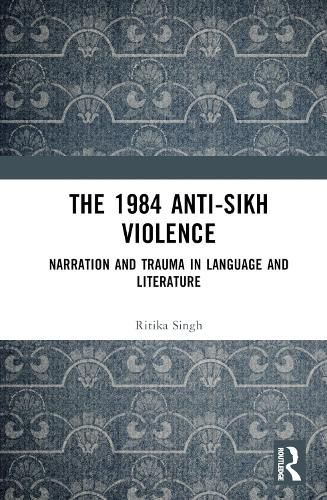Readings Newsletter
Become a Readings Member to make your shopping experience even easier.
Sign in or sign up for free!
You’re not far away from qualifying for FREE standard shipping within Australia
You’ve qualified for FREE standard shipping within Australia
The cart is loading…






This book presents a comprehensive theoretical study of fictional and non-fictional narratives of 1984 anti-Sikh violence in India.
This volume contributes to the expanding field of trauma and memory studies in literature through an interdisciplinary approach. It takes perspectives from the fields of neurobiology, sociology, psychology, and literary theory to offer an integrative and fresh approach to reading and locating trauma in narratives. Going beyond a simple reading of silence, the author discusses themes which encompass othering of the Sikh body; visual, echoic, and olfactory memories; somatic expressions of trauma; experiences of women and instances of rape and sexual atrocities; and children as young witnesses and intergenerational trauma, to understand questions of agency and politics of remembering.
Incisive and invigorating, this book is a must read for students of memory and trauma studies, Sikh studies, South Asian literature, gender studies, English studies, postcolonial studies, cultural studies, psychology, exclusion studies, and political sociology.
$9.00 standard shipping within Australia
FREE standard shipping within Australia for orders over $100.00
Express & International shipping calculated at checkout
This book presents a comprehensive theoretical study of fictional and non-fictional narratives of 1984 anti-Sikh violence in India.
This volume contributes to the expanding field of trauma and memory studies in literature through an interdisciplinary approach. It takes perspectives from the fields of neurobiology, sociology, psychology, and literary theory to offer an integrative and fresh approach to reading and locating trauma in narratives. Going beyond a simple reading of silence, the author discusses themes which encompass othering of the Sikh body; visual, echoic, and olfactory memories; somatic expressions of trauma; experiences of women and instances of rape and sexual atrocities; and children as young witnesses and intergenerational trauma, to understand questions of agency and politics of remembering.
Incisive and invigorating, this book is a must read for students of memory and trauma studies, Sikh studies, South Asian literature, gender studies, English studies, postcolonial studies, cultural studies, psychology, exclusion studies, and political sociology.